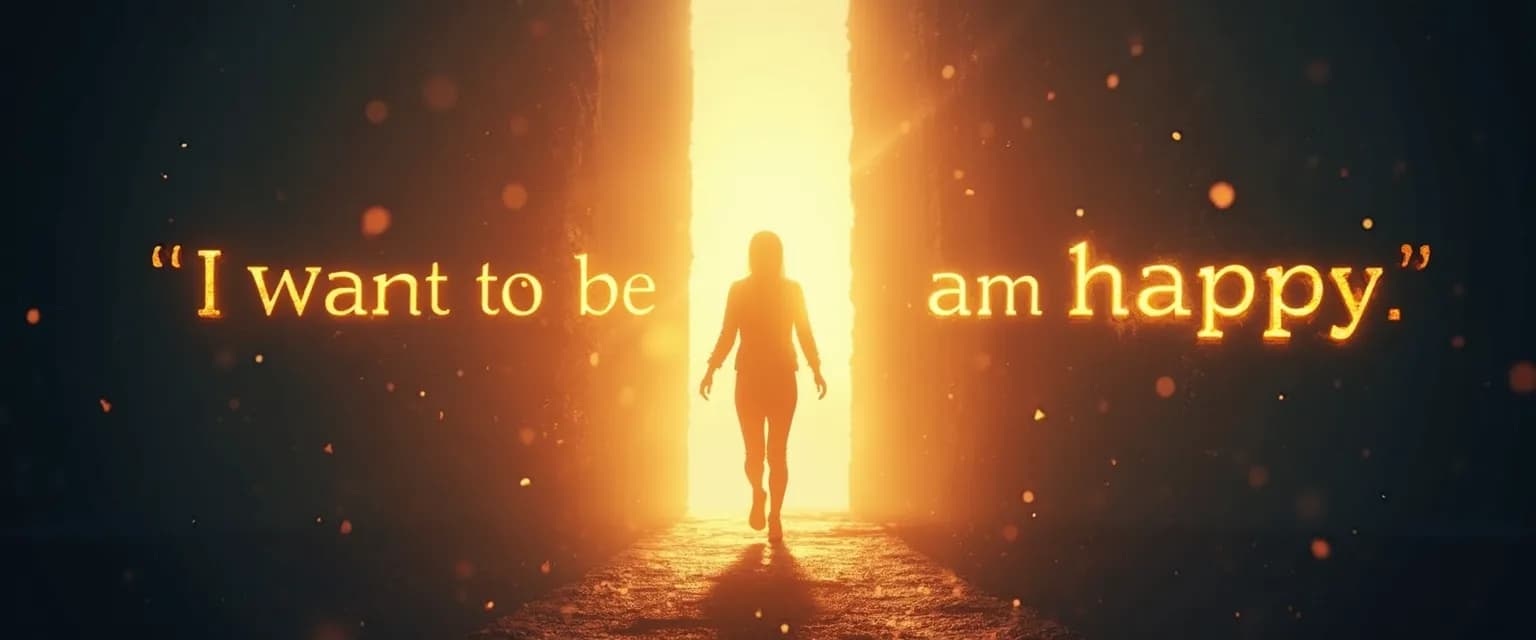From Wishing to Being: How to Transform 'I Want to Be Happy' into Reality
Ever caught yourself thinking "I want to be happy" while scrolling through social media or lying awake at night? You're not alone. This universal wish echoes through humanity, yet for many, happiness remains just that—a wish, a someday destination that never quite arrives. The gap between wanting happiness and actually experiencing it isn't just psychological—it's neurological. Our brains are wired to adapt to positive circumstances quickly, leaving us constantly chasing the next happiness fix.
But what if the path to happiness isn't about chasing at all? Science shows that sustainable happiness doesn't come from pursuing it directly but from building it deliberately through daily practices. The transformation from "I want to be happy" to "I am happy" requires a fundamental shift: from seeing happiness as something to acquire to recognizing it as something to create and nurture through self-worth.
This journey isn't about waiting for perfect circumstances. It's about developing concrete practices that build your happiness muscles regardless of external conditions. Let's explore how to make this transformation real in your everyday life.
Why Saying 'I Want to Be Happy' Isn't Enough (And What to Do Instead)
When you say "I want to be happy," you're actually facing what psychologists call the happiness paradox: the more directly you pursue happiness, the more it eludes you. This happens because happiness works more like a byproduct than a destination.
Happiness Set Points
Research shows we each have a happiness set point—a baseline level of contentment we naturally return to. While about 50% of this is genetic, the remaining portion is within our control. Instead of fighting your set point, work with it by focusing on small, consistent adjustments rather than dramatic life overhauls.
Process vs. Outcome Happiness
Shifting from outcome-focused happiness ("I'll be happy when I get that promotion") to process-oriented contentment ("I find satisfaction in doing this work well") creates a more sustainable happiness framework. This shift transforms "I want to be happy" from a distant goal to an ongoing practice.
Try this simple exercise: each evening, identify three moments from your day that brought you genuine contentment. They don't need to be extraordinary—maybe it was savoring your morning coffee or sharing a laugh with a colleague. This builds authentic contentment by training your brain to notice happiness that already exists rather than always seeking it elsewhere.
3 Daily Practices When You Think 'I Want to Be Happy'
When the "I want to be happy" thought arises, it signals an opportunity to shift from wishing to creating. These three practices transform that desire into action:
Happiness Spotlighting
For two minutes each day, shine your attention on something good happening right now. Maybe it's the warmth of sunlight through a window or the comfort of your favorite chair. This practice trains your brain to spot happiness in real-time rather than viewing it as something always in the future.
Contentment Inventory
Create a mental list of reliable happiness sources in your life—things that consistently bring you joy regardless of circumstances. These might include certain music, physical movement, or connecting with specific people. When you think "I want to be happy," draw from this inventory instead of waiting for happiness to find you.
Emotional Reset
Develop a two-minute reset for moments when happiness feels distant. This might be a specific breathing pattern, a quick walk, or even a short meditation technique. The goal isn't to force happiness but to create space for it to emerge naturally.
Your Path Forward: From 'I Want to Be Happy' to 'I Am Happy'
The journey from "I want to be happy" to "I am happy" happens through small, consistent shifts rather than grand transformations. Success looks like noticing moments of contentment more frequently and recovering more quickly from difficult emotions—not the absence of challenges.
Building an internal happiness framework means developing contentment that doesn't depend on perfect circumstances. This doesn't happen overnight, but with consistent practice, your brain creates new neural pathways that make happiness more accessible.
Remember that saying "I want to be happy" is the beginning of your journey, not a statement of what's missing. Each time that thought arises, let it serve as a reminder to engage with the practices that build genuine contentment from the inside out. Happiness isn't something to chase—it's something to cultivate, one small moment at a time.




